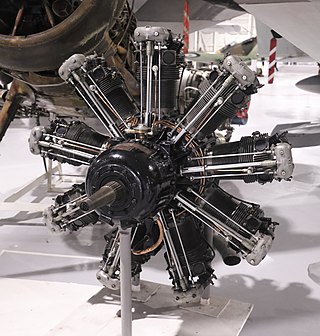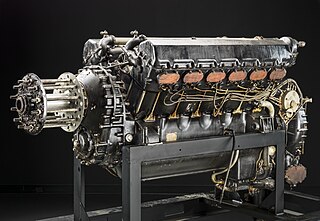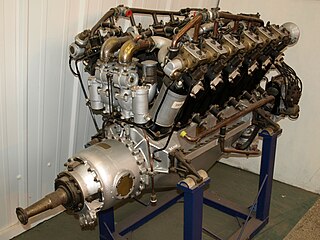Related Research Articles

The Bristol Jupiter is a British nine-cylinder single-row piston radial engine that was built by the Bristol Aeroplane Company. Originally designed late in World War I and known as the Cosmos Jupiter, a lengthy series of upgrades and developments turned it into one of the finest engines of its era.

The Bristol Pegasus is a British nine-cylinder, single-row, air-cooled radial aero engine. Designed by Roy Fedden of the Bristol Aeroplane Company, it was used to power both civil and military aircraft of the 1930s and 1940s. Developed from the earlier Mercury and Jupiter engines, later variants could produce 1,000 horsepower from its capacity of 1,750 cubic inches by use of a geared supercharger.

Sir Frederick Handley Page was an English industrialist who was a pioneer in the aircraft industry and became known as the father of the heavy bomber.

Bristol Siddeley Engines Ltd (BSEL) was a British aero engine manufacturer. The company was formed in 1959 by a merger of Bristol Aero-Engines Limited and Armstrong Siddeley Motors Limited. In 1961 the company was expanded by the purchase of the de Havilland Engine Company and the engine division of Blackburn Aircraft. Bristol Siddeley was purchased by Rolls-Royce Limited in 1966.

Major Frank Bernard Halford CBE FRAeS was an English aircraft engine designer. He is best known for the series of de Havilland Gipsy engines, widely used by light aircraft in the 1920s and 30s.

The Rolls-Royce Kestrel is a 21.25 litre V-12 aircraft engine from Rolls-Royce. It was their first cast-block engine, and used as the pattern for most of their future piston-engine designs. Used during the interwar period, it was fitted to a number of British fighters and bombers of the era, including the Hawker Fury and Hawker Hart family, and the Handley Page Heyford. The Kestrel engine was also sold to international air force customers, in this role it used to power prototypes of the German Messerschmitt Bf 109 and the Junkers Ju 87 "Stuka" dive-bomber, as the Junkers Jumo 210 engines were not ready to be fitted. Several examples of the Kestrel engine remain airworthy today.
The Cirrus and Hermes or Cirrus-Hermes are a series of British aero engines manufactured, under various changes of ownership, from the 1920s until the 1950s. The engines were all air-cooled, four-cylinder inline types, with earlier ones upright and later designs inverted.

The Rolls-Royce Buzzard was a British piston aero engine of 36.7 litres capacity that produced about 800 horsepower (600 kW). Designed and built by Rolls-Royce Limited it is a V12 engine of 6 in (150 mm) bore and 6.6 in (170 mm) stroke. Only 100 were made. A further development was the Rolls-Royce R engine. The Buzzard was developed by scaling-up the Rolls-Royce Kestrel Engine.

The Rolls-Royce Eagle was the first aircraft engine to be developed by Rolls-Royce Limited. Introduced in 1915 to meet British military requirements during World War I, it was used to power the Handley Page Type O bombers and a number of other military aircraft.

Rolls-Royce produced a range of piston engine types for aircraft use in the first half of the 20th century. Production of own-design engines ceased in 1955 with the last versions of the Griffon; licensed production of Teledyne Continental Motors general aviation engines was carried out by the company in the 1960s and 1970s.

The Rolls-Royce Falcon is an aero engine developed in 1915. It was a smaller version of the Rolls-Royce Eagle, a liquid-cooled V-12 of 867 cu in capacity. Fitted to many British World War I-era aircraft, production ceased in 1927. The Falcon was designed by R.W. Harvey-Bailey.
The de Havilland Engine Company was an offshoot of the de Havilland aircraft building company, which started life as the 'Engine Division of the de Havilland Aircraft Company' in 1926 producing the famous de Havilland Gipsy aero-engine. The company was merged with Bristol Siddeley (BSEL) engines in 1961 with BSEL subsequently becoming part of Rolls-Royce Limited in 1968.

The Martinsyde F.4 Buzzard was developed as a powerful and fast biplane fighter for the Royal Air Force (RAF), but the end of the First World War led to the abandonment of large-scale production. Fewer than 400 were eventually produced, with many exported. Of particular note was the Buzzard's high speed, being one of the fastest aircraft developed during World War I.

The Armstrong Siddeley Jaguar is an aircraft engine developed by Armstrong Siddeley. The Jaguar was a petrol-fuelled air-cooled 14-cylinder two-row radial engine design. The Jaguar III was first used in 1923, followed in 1925 by the Jaguar IV and in 1927 by the Jaguar VI. In 1925 the Jaguar became the first production aero engine incorporating a geared supercharger.
Martinsyde was a British aircraft and motorcycle manufacturer between 1908 and 1922, when it was forced into liquidation by a factory fire.
The Green Engine Co was a British engine company founded by Gustavus Green in Bexhill to sell engines of his design. He flourished especially as a designer of aeroplane engines during the first two decades of the 20th century. The engines were actually manufactured by the Aster Engineering Company.

The Blackburn Cirrus Minor is a British four-cylinder, inverted, in-line air-cooled aero-engine that was designed and built by the Cirrus Engine Section of Blackburn Aircraft Limited in the late 1930s.

The ADC Cirrus is a series of British aero engines manufactured using surplus Renault parts by the Aircraft Disposal Company (ADC) in the 1920s.

The ADC Airdisco is a British V-8 aero engine that first ran in 1925.
The ADC Nimbus was a British inline aero engine that first ran in 1926. The Nimbus was developed from the Siddeley Puma aero engine by Frank Halford of the Aircraft Disposal Company, the goal was to develop the Puma to produce its intended power output which Halford eventually achieved. The Nimbus was further developed into an air-cooled version known as the ADC Airsix which did not enter production and was not flown.
References
Citations
- ↑ Gunston 2005, p.7.
- 1 2 "Terms of Surplus Aircraft Sale". The Times. No. 42360. London. 16 March 1920. p. 16.
- ↑ Barnes 1976, pp. 26–27.
- ↑ "Company Meetings – Handley Page Limited". The Times. No. 43067. London. 26 June 1922. p. 21.
- ↑ Barnes 1976, p.27.
- ↑ http://www.aviastar.org/air/england/martinsyde_adc-1.php [ bare URL ]
- ↑ https://www.scripoworld.com/records/united-kingdom/england/aircraft-disposal-company-ltd/ [ bare URL ]
- ↑ Lumsden 2003, p.54.
Bibliography
- Barnes, C.H. Handley Page Aircraft since 1907. London: Putnam, 1976. ISBN 978-0-370-00030-5.
- Gunston, Bill. World Encyclopedia of Aircraft Manufacturers. Stroud, UK:Sutton Publishing, 2nd Edition, 2005. ISBN 0-7509-3981-8.
- Lumsden, Alec. British Piston Engines and their Aircraft. Marlborough, Wiltshire: Airlife Publishing, 2003. ISBN 1-85310-294-6.